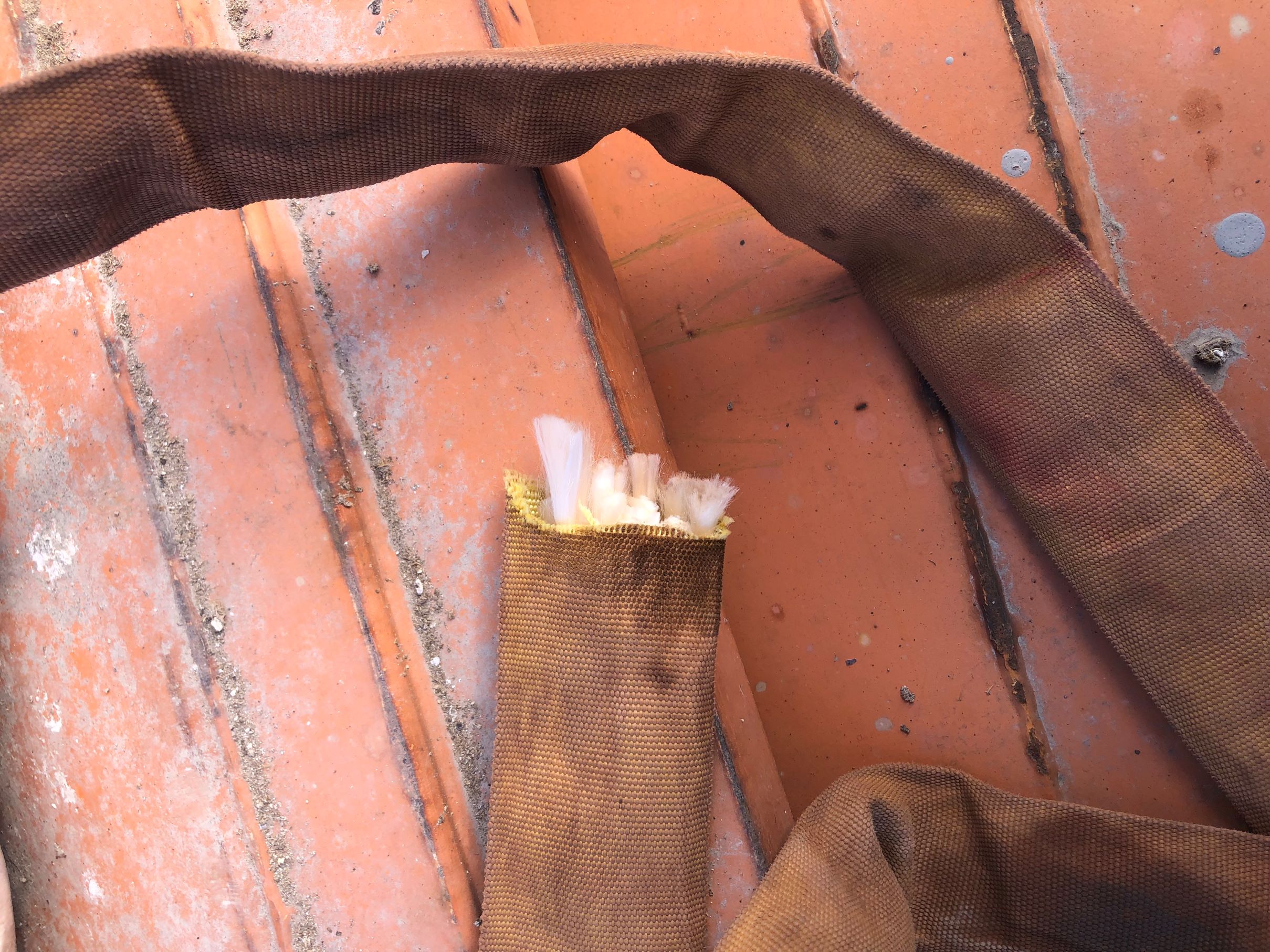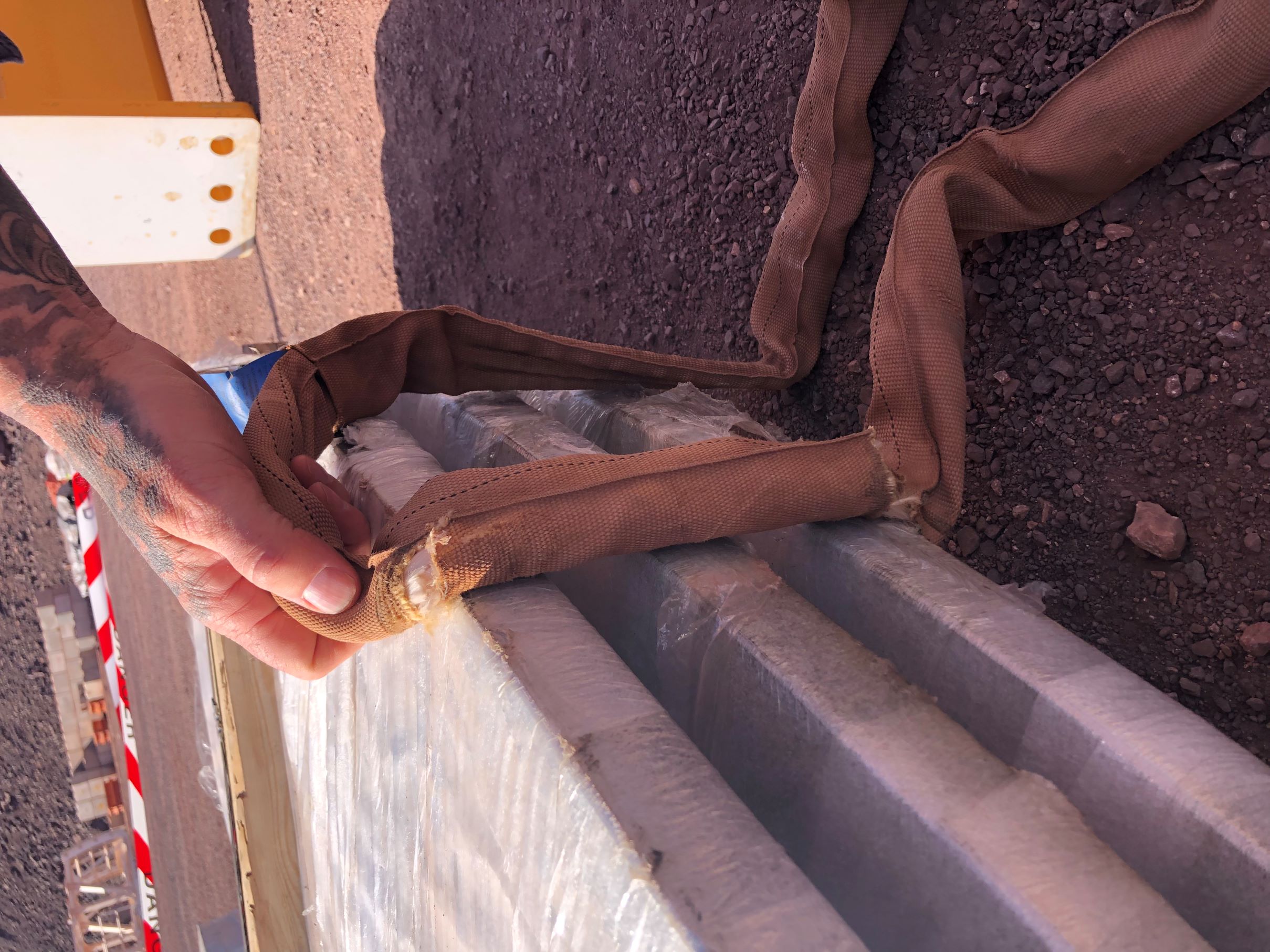23 June 2023
SafeWork SA is reminding businesses of the dangers of using soft slings on materials with corners, after a 2.2 tonne load fell at a work site.
The 18 May incident occurred after the synthetic fibre sling used to secure the load was severed against a sharp edge.
A SafeWork SA investigation into the incident identified that the load was secured by two soft slings, each with a 3-tonne working load limit.
While the crane crew were lifting and slewing the load, one of the slings slipped resulting in a complete cut to the soft sling.
This caused one end of the load to hit the ground and the second soft sling to sustain partial cut damage.
The severed sling (left) ad the partially cut sling (right).
Sudden failure of soft slings can result in serious or fatal injuries.
Failure commonly occurs when soft slings are damaged by sharp edges, either on the load or as a result of coming into contact with obstructions.
Excessive exposure to UV light, dirt, chemicals or oils can also contribute to wear.
These failures can occur even when using soft slings below their working load limit.
While soft slings are well suited to certain applications, they also have a number of limitations.
One of the most common causes of failure when using soft slings is lifting a load that has an edge with a small radius rather than a rounded edge.
A small radius is a sharp edge and can easily cut through the soft sling under the load.
What may appear to be a blunt edge on a load can still be sharp enough to cut a soft sling when pressure is applied.
The edge of a load only needs to be relatively sharp when compared to the thickness of the soft sling for the sling to be cut.
Soft slings can also easily be cut when in contact with an obstruction while under load.
The outer casing of soft slings provides limited protection to the internal polyester of nylon strands which can easily be cut through when exposed to a sharp edge under tension.
Where a soft sling comes into contact with a relatively sharp edge of a load, appropriate cut-resistant material (such as a protective sleeve or pad) should be used between the sling and the edges of the load.




